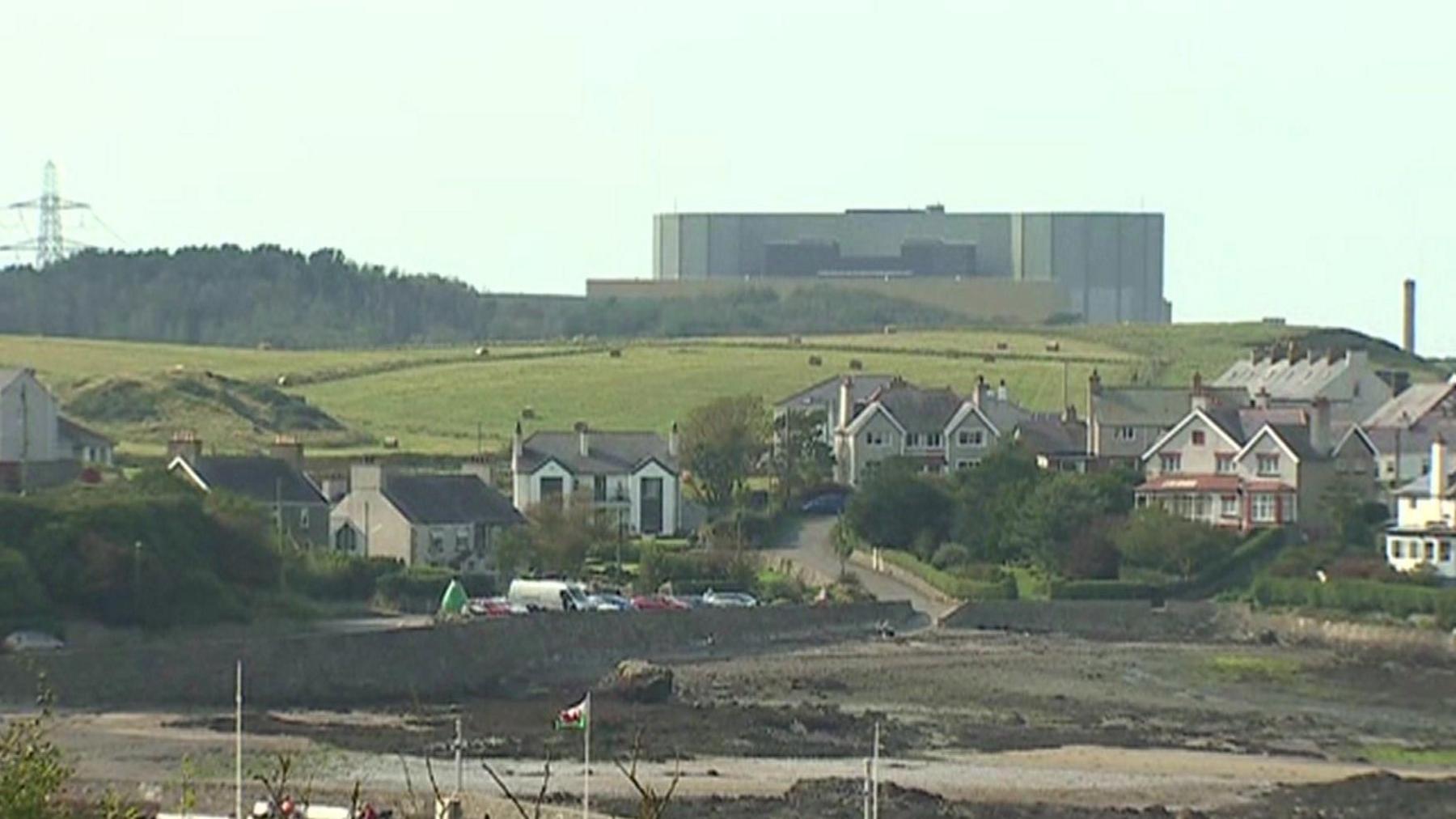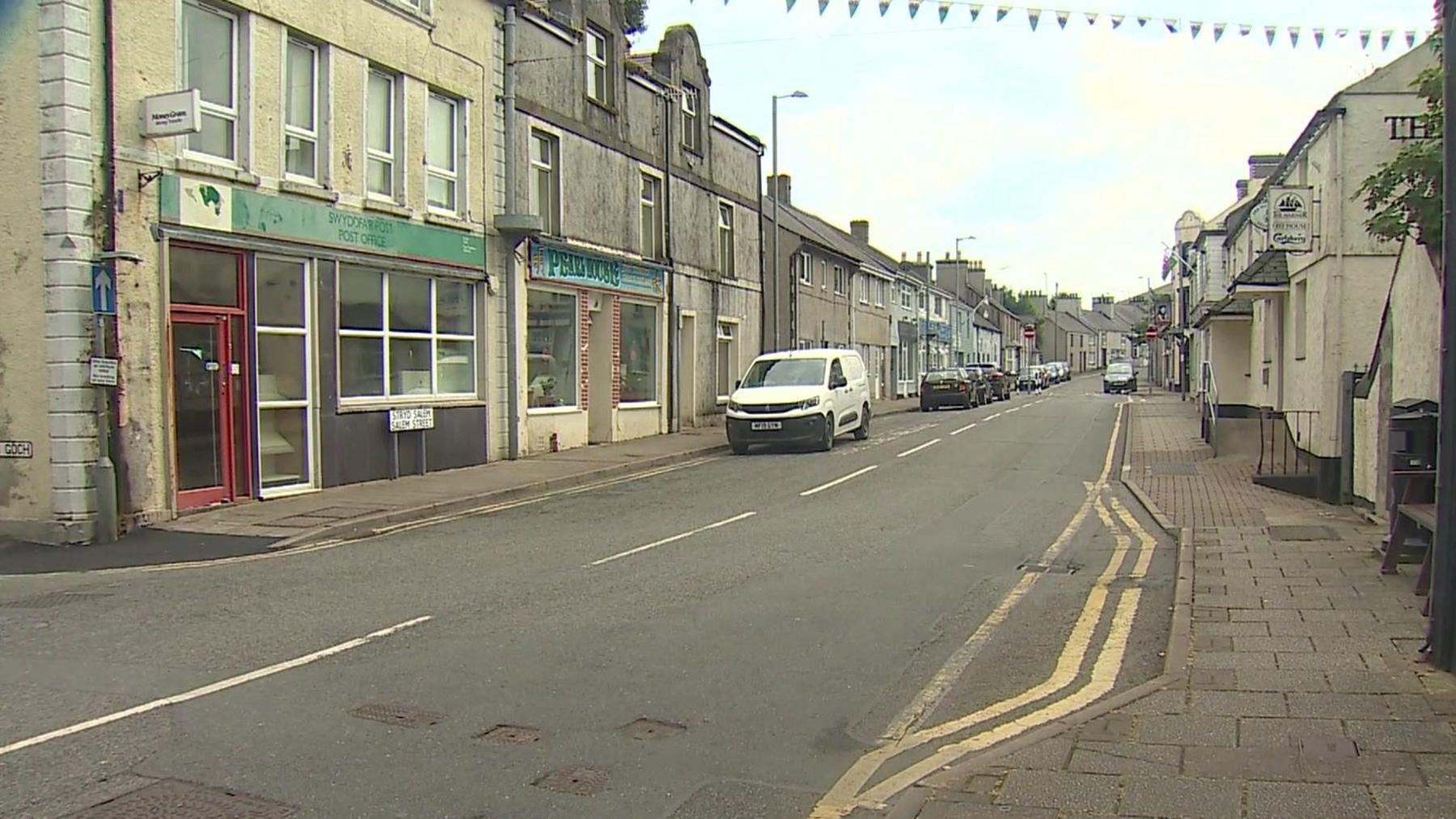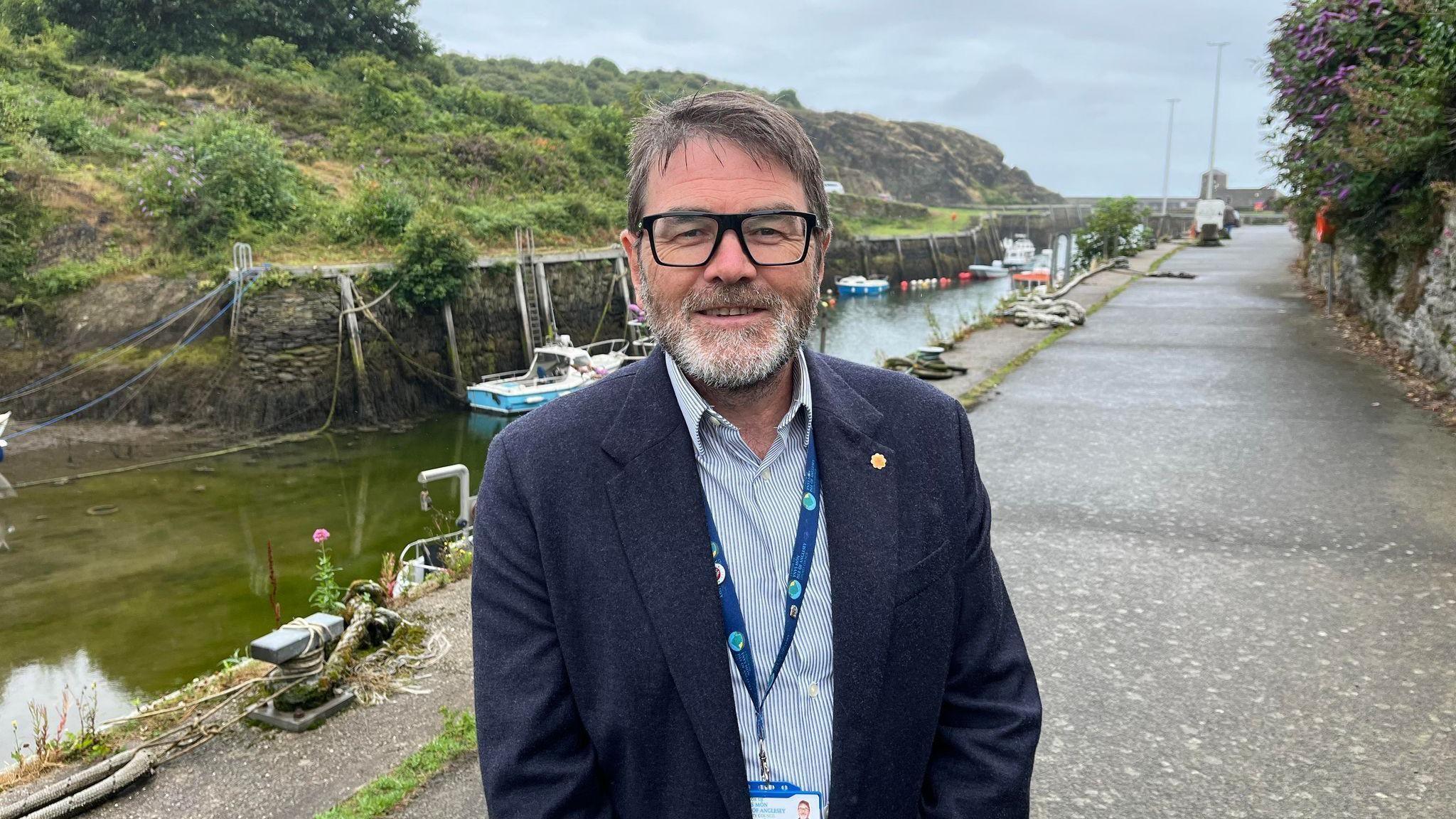Young leave as hopes hinge on power plant boost

Fewer people are working at the original nuclear plant in Wylfa since it stopped producing energy in 2015
- Published
Parts of north Anglesey "desperately need investment" with people of working age leaving in droves due to a lack of work, housing and opportunities, the island's council said in a report.
It also said north Anglesey "has been in decline for at least two decades", resulting in an aging population and a weakening of the Welsh language.
Currently, there are twice as many people over 50 as there are between the ages of 25 and 49, creating a "fragile" local economy.
The council is trying to attract more business units to an area that has hinged its job hopes on a much talked-about nuclear power plant at Wylfa.
Pattern of job losses
But job losses have been a recurring issue on the island for the past 20 years.
In 2004, the closure of the Octel Amlwch factory resulted in the loss of over 500 jobs, followed by the shutdown of Anglesey Aluminum in 2009.
The situation worsened after the Wylfa nuclear plant ceased energy production in 2015.
The closure of the Rehau factory in Amlwch in 2019 added another blow, eliminating around 100 well-paid positions.
According to the latest census, the north of the island is home to 13,200 residents.
However, from 2011 to 2021, the number of people aged 65 and over increased by 30%, a significant rise compared to the Welsh average of 18%.
With the council admitting that "economic inactivity has increased in this area as it is a popular retirement area", this trend is now viewed as a serious threat.

The economic situation in the area can be felt in towns such as Amlwch where the population fell from 3,211 to 3,147 between 2011 and 2021
Given the aging population, it’s not surprising that one of the local primary schools in the rural village of Carreglefn had to close its doors.
Enrolment dropped from 42 pupils in 2012 to nine this year.
The economic challenges have also affected the number of Welsh speakers in the region.
Between 2011 and 2021, there was a 4% decline in Welsh speakers around Amlwch and Llannerch-y-medd.
The report added: "It is a cause for concern that the area has lost so many residents between the ages of 25 and 50, when people are usually in the early days of their career and putting down roots."
One person who has lived in north Anglesey all her life is Elin Mair Wynne.
The mother of two lives in Llanfechell, just two miles from the Wylfa site, and said social change has been evident in the area for years.

Elin Mair Wynne is treasurer of the community group Friends of Mechell
"Certainly the loss of jobs has had a terrible hit on young families. The village and the area have become older, if that's fair to say, and it's very difficult for young families to come back to the village and the area," she said.
"When businesses shut down, many people are forced to leave in search of work that pays well."
She believes many young families feel they have no choice but to move away.
Primary school with only nine pupils to close
- Published23 May 2024
What is Wylfa? The long and complex story explained
- Published22 May 2024
For years, Anglesey's economic hopes have hinged largely on the construction of a new nuclear power plant to replace the old Magnox station at Wylfa on the island's northern coast.
This new plant was anticipated to create around 1,000 permanent jobs, with thousands more during the construction phase.
However, in January 2019, Hitachi suspended work on the Wylfa Newydd project, which was expected to cost up to £20 billion, due to a failure to secure a financial agreement.
In March of this year, the UK government purchased the site from Hitachi, and just before the general election, the Conservative government confirmed that the Wylfa site remains a top priority for a new nuclear facility.

Llinos Medi was elected as the island's MP earlier this month
Despite these developments, the island's new MP acknowledges that any potential nuclear project is still years away.
The focus now is on pushing for a clear timetable and exploring other avenues to stimulate the local economy in the meantime, Llinos Medi said.
She added: "Not one government has managed to bring this nuclear plant to Anglesey, and the possibility of it happening is still far off.
"The challenges the area is facing exist now, so that is why there must be a different intervention here in the short term."
She added the impact of industries leaving the area has been "massive" on community resilience and that there are now fewer births in the region.

"We need to attract work that is not relient on Wylfa," says Gary Pritchard
The council's report proposes several plans to create jobs as soon as possible, including developing more business units around the area's most populated town, Amlwch.
Deputy leader Gary Pritchard emphasised the need for strategic planning, stating that "attracting work that isn’t reliant on Wylfa is also crucial".
"With an increasing number of people over 70 and fewer under 50, it’s essential that we gather the evidence needed to approach the Welsh government for funding to develop a comprehensive strategy and ensure job creation in the north of the island," he said.